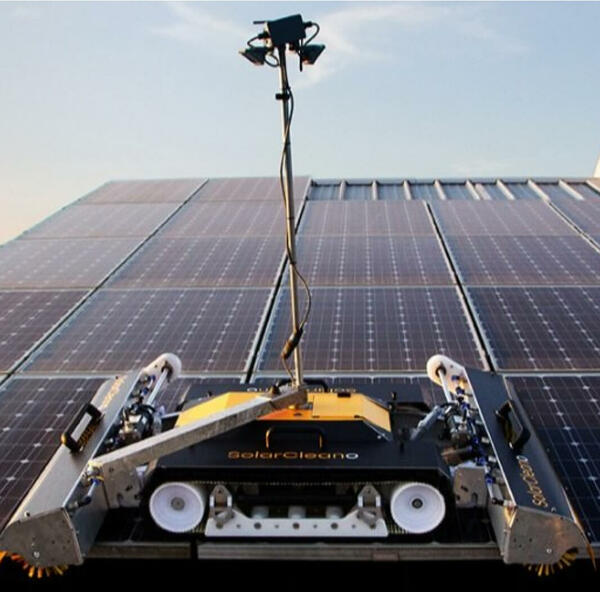Notifications
ALL BUSINESS
COMIDA
DIRECTORIES
ENTERTAINMENT
FINER THINGS
HEALTH
MARKETPLACE
MEMBER's ONLY
MONEY MATTER$
MOTIVATIONAL
NEWS & WEATHER
TECHNOLOGIA
TV NETWORKS
VIDEOS
VOTE USA 2026/2028
INVESTOR RELATIONS
COMING 2026 / 2027
ALL BUSINESS
COMIDA
DIRECTORIES
ENTERTAINMENT
FINER THINGS
HEALTH
MARKETPLACE
MEMBER's ONLY
MONEY MATTER$
MOTIVATIONAL
NEWS & WEATHER
TECHNOLOGIA
TV NETWORKS
VIDEOS
VOTE USA 2026/2028
INVESTOR RELATIONS
COMING 2026 / 2027
About Me
 Thomas Alexa
Thomas Alexa Maidup Cleaning offers the best cleaning services in Jacksonville, Florida. Experience comprehensive, dependable, and professional house cleaning based on your requirements. Make your reservation now!
 Thomas Alexa -
Mon at 5:29 PM -
Technology -
39 views -
0 Comments -
0 Likes -
0 Reviews
Thomas Alexa -
Mon at 5:29 PM -
Technology -
39 views -
0 Comments -
0 Likes -
0 Reviews

As the world transitions toward renewable energy, solar power has become one of the most adopted clean energy sources. With the increasing number of solar installations—residential, commercial, and industrial—the maintenance of solar panels is now more crucial than ever. One of the biggest challenges in solar energy production is dust and dirt accumulation, which can reduce solar panel efficiency by up to 30%. The solution? A robotic solar panel cleaner that offers an automated, intelligent, and efficient approach to keeping solar panels spotless.
In this article, we will explore what robotic solar panel cleaners are, how they work, their benefits, and why they are becoming essential for energy-efficient operations in solar farms and even rooftop setups.
A robotic solar panel cleaner is an automated device designed to clean the surface of photovoltaic (PV) panels without human intervention. It utilizes intelligent sensors, robotic arms or rolling mechanisms, soft brushes, and sometimes even waterless technology to remove dust, bird droppings, pollen, and other debris from the panels.
These robots come in various models—some are portable and designed for small setups, while others are large, rail-mounted systems suitable for utility-scale solar farms. Most importantly, they can clean panels daily, autonomously, and efficiently, without risking damage to the solar modules.
Dirty solar panels block sunlight, significantly reducing the energy they can generate. Depending on the location and environment (e.g., deserts, dusty areas, or near trees), panels may need to be cleaned every few days to maintain optimal efficiency.
Improved Efficiency: Dirty panels can lose 15–30% of their efficiency.
Extended Panel Lifespan: Dirt build-up can cause permanent shading, hot spots, or corrosion.
Cost Efficiency: Regular cleaning prevents long-term damage and reduces the cost of repairs or replacements.
Regulatory Compliance: Many solar contracts now require periodic maintenance reports, including cleaning logs.
A robotic solar panel cleaner typically uses the following components and processes:
These robots either crawl across the panels using tank-like tracks or wheels or are mounted on rails for guided motion. Some advanced versions are even drone-assisted.
Most robotic cleaners are equipped with soft, non-abrasive brushes, microfiber rollers, or air jets that sweep the dirt away without scratching the panels. Some systems use air blowers or vacuum suction for water-free cleaning.
Some systems use minimal water, making them eco-friendly. Others are completely waterless and use electrostatic or dry-cleaning methods, ideal for arid regions where water is scarce.
Equipped with intelligent sensors, these cleaners detect the level of dirt and adjust cleaning intensity. Some models use machine learning algorithms to optimize cleaning schedules based on weather data, dust patterns, and energy output fluctuations.
Most modern systems come with mobile or desktop applications for remote monitoring. Operators can schedule cleaning cycles, check performance, and receive fault alerts in real time.
There are different types of robotic cleaners depending on the application:
| Type | Application | Features |
|---|---|---|
| Portable Robots | Rooftop residential systems | Compact, manually placed, easy to carry |
| Rail-Mounted Robots | Large solar farms | Automated, programmable, high throughput |
| Drone-Based Systems | Hard-to-reach solar panels | Spray-only, aerial operation |
| Waterless Robots | Areas with water scarcity | Uses dry brushes, air jets, or electrostatic charge |
| Hybrid Systems | Commercial installations | Can switch between water and dry cleaning |
Manual cleaning of solar panels is labor-intensive, time-consuming, and inconsistent. A robotic solar panel cleaner can clean an entire solar array in less than half the time compared to manual methods. Some models clean 1 MW worth of panels in a few hours.
Studies show that regular cleaning can boost solar output by 10% to 30%. With intelligent automation, robots ensure that the panels are always performing at peak efficiency.
In large-scale installations, manual cleaning requires a sizable workforce. With robotic systems, fewer people are needed to monitor and maintain the panels—drastically lowering long-term operational costs.
Many robotic systems are water-efficient or completely water-free, making them ideal for water-scarce regions and sustainable operations.
Solar farms and rooftop installations pose safety risks during manual cleaning. Robots eliminate the need for humans to climb onto structures or work in extreme weather conditions.
AI-powered cleaners can automatically clean based on performance drops or environmental conditions. They can also integrate with solar monitoring software for real-time decision-making.
In Saudi Arabia, one of the world’s largest solar farms faced major dust storms that led to a 25% energy loss. After deploying robotic solar panel cleaners, energy production increased by 22%, while cleaning water usage dropped by 90%. The system paid for itself within two years, proving the long-term viability of automation in solar maintenance.
When selecting a cleaner, consider the following factors:
Flat, inclined, or irregular arrays may require different types of cleaners (tracked, wheeled, or drone-based).
High-dust environments will benefit from daily automated cleaning. Check if the robot supports scheduled cleaning.
Solar-powered robots are more energy-efficient and reduce the dependency on external charging.
If water is a concern, opt for a dry or hybrid system. Ensure brushes or tools are panel-safe.
Go for a product that offers easy maintenance, spare parts, and local technical support.
Assess the cost of the robot against your energy gains. Most systems offer ROI within 1–3 years, depending on size and usage.
The future of solar maintenance lies in complete integration. Robotic cleaners can be linked with:
IoT-enabled solar monitoring platforms
Weather forecasting systems
Performance analytics tools
Remote diagnostic apps
This synergy creates a smart, self-maintaining solar grid that minimizes downtime, boosts ROI, and ensures long-term reliability.
While robotic cleaners are revolutionizing solar panel maintenance, they do come with some limitations:
Initial Cost: High upfront investment for small-scale users
Compatibility Issues: Not all robots fit every panel layout
Weather Sensitivity: Heavy winds or rains may affect operation
Software Bugs: Early-stage AI platforms may need debugging and updates
However, as the technology matures, these issues are rapidly being addressed by manufacturers and tech startups.
Switching to a robotic solar panel cleaner is not just an economic decision—it’s an environmental one. By reducing water usage, chemical cleaning agents, and labor transportation emissions, these systems contribute to a greener, cleaner energy cycle.
According to the International Renewable Energy Agency (IRENA), smart cleaning systems can reduce a solar farm's lifetime water consumption by up to 90%.
The industry is moving toward AI-powered, fully autonomous systems that can:
Predict cleaning cycles
Detect panel anomalies
Self-diagnose technical faults
Adapt to multiple terrains
Use drones for aerial inspections and minor cleaning
With more governments and corporations pledging to reach net-zero emissions, investment in solar panel infrastructure—and its maintenance—will only grow. Robotic solutions are expected to become standard in the next 5 years across both developed and developing nations.
In the race toward clean energy, solar power is a key player—but it’s only as effective as the panels’ cleanliness. A robotic solar panel cleaner not only ensures that panels operate at their highest potential but also reduces operational costs, minimizes water usage, and offers safer, smarter maintenance.
Whether you're a homeowner with rooftop panels or the manager of a 100-acre solar farm, investing in robotic cleaning solutions can boost your energy yield, protect your panels, and automate your maintenance workflow—saving time and money in the long run.
